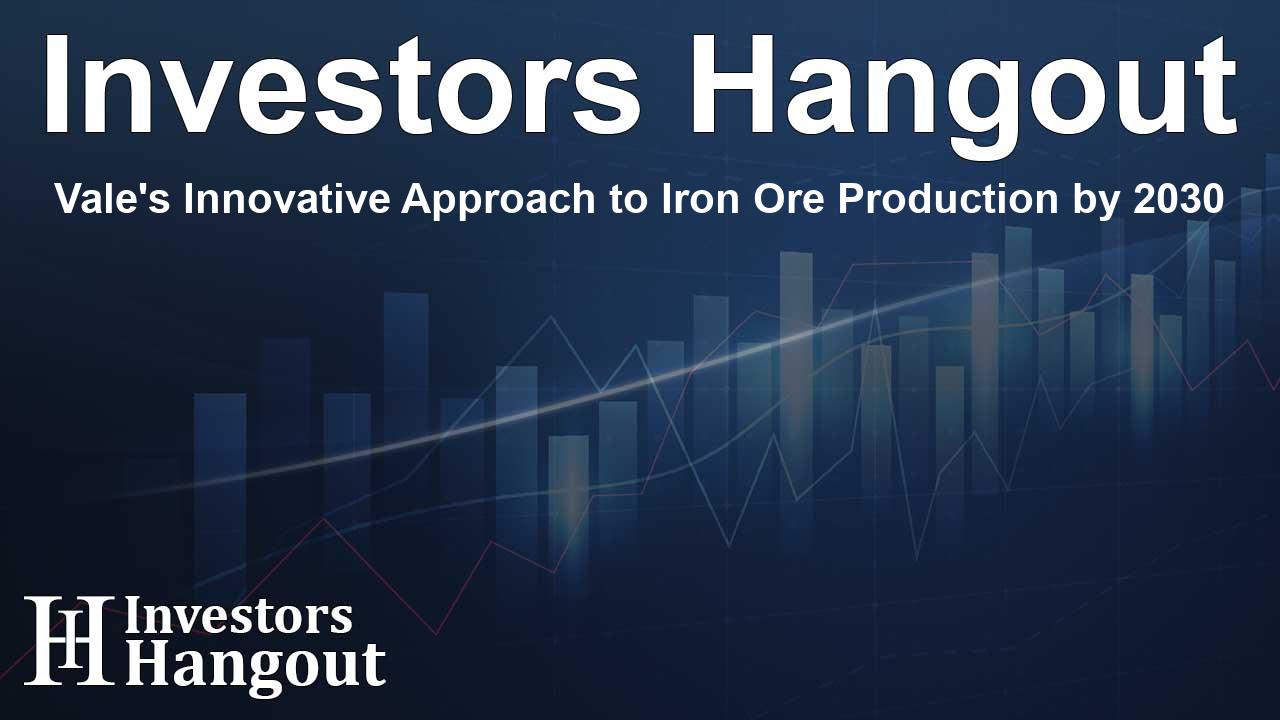Vale's Innovative Approach to Iron Ore Production by 2030

Vale's Vision for Sustainable Mining Practices
Brazilian miner Vale is paving the way toward sustainable mining by aiming for 10% of its iron ore production to originate from recycling mine waste known as tailings by the year 2030. This innovative approach not only showcases the company's commitment to environmental stewardship but also addresses the urgent need to minimize the dangers associated with storing hazardous waste in dams.
Transforming Waste Into Resource
In 2024, Vale plans to recover around 7 million metric tons of iron ore through its pioneering "circular mining" initiative. Rafael Bittar, Vale's executive vice president of technical affairs, emphasized that while specific projections for tailings-derived output in 2030 remain undefined, the overall growth in production suggests a significant increase is on the horizon.
Higher Production Targets Ahead
Recently, Vale revised its 2024 production forecast upwards, anticipating an output of up to 330 million tons of iron ore this year. Furthermore, the company projects annual production to exceed 360 million tons from 2030 onward, indicating a robust operational strategy moving forward.
Addressing Environmental Hazards
Vale's commitment to reusing waste has gained momentum following two catastrophic dam collapses in Mariana and Brumadinho in 2015 and 2019, respectively. These tragic events took hundreds of lives and caused considerable environmental harm, prompting Vale to take extensive measures to mitigate future risks.
Reducing Tailings and Enhancing Safety
In light of these events, the company has focused on eliminating all upstream dams, identified as particularly risky. Last year, Vale generated 48.5 million tons of iron ore tailings, underscoring the importance of managing this waste effectively.
A Commitment to Change
Vale's initiative marks a significant shift in mining practices aimed at safeguarding both the environment and public safety. This approach anticipates a future where mining operations not only thrive economically but also operate sustainably and responsibly across the globe.
Frequently Asked Questions
What percentage of Vale's iron ore production will come from tailings by 2030?
Vale aims for 10% of its iron ore production to come from tailings by 2030.
What is Vale's circular mining program?
Vale's circular mining program focuses on recovering iron ore from waste materials, including tailings.
When does Vale expect to produce increased amounts of iron ore?
Vale has revised its 2024 outlook to expect up to 330 million tons and projects over 360 million tons annually from 2030 onwards.
Why is Vale eliminating upstream dams?
Vale is working to eliminate upstream dams to reduce the risks associated with hazardous waste storage following previous dam collapses.
How much tailings does Vale generate yearly?
Last year, Vale generated 48.5 million tons of iron ore tailings, highlighting the need for effective waste management.
About Investors Hangout
Investors Hangout is a leading online stock forum for financial discussion and learning, offering a wide range of free tools and resources. It draws in traders of all levels, who exchange market knowledge, investigate trading tactics, and keep an eye on industry developments in real time. Featuring financial articles, stock message boards, quotes, charts, company profiles, and live news updates. Through cooperative learning and a wealth of informational resources, it helps users from novices creating their first portfolios to experts honing their techniques. Join Investors Hangout today: https://investorshangout.com/
Disclaimer: The content of this article is solely for general informational purposes only; it does not represent legal, financial, or investment advice. Investors Hangout does not offer financial advice; the author is not a licensed financial advisor. Consult a qualified advisor before making any financial or investment decisions based on this article. The author's interpretation of publicly available data shapes the opinions presented here; as a result, they should not be taken as advice to purchase, sell, or hold any securities mentioned or any other investments. The author does not guarantee the accuracy, completeness, or timeliness of any material, providing it "as is." Information and market conditions may change; past performance is not indicative of future outcomes. If any of the material offered here is inaccurate, please contact us for corrections.